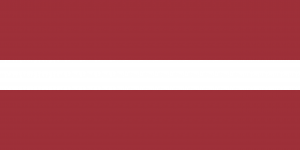Language/Standard-latvian/Grammar/How-to-Use-Have
Hi Standard Latvian learners! 😊
In this lesson, we will be discussing how to use "have" in Standard Latvian. We will cover the different conjugations and provide examples to help you better understand how to use this important verb.
Introduction[edit | edit source]
Using "have" in Latvian is essential for expressing possession, obligations, and past actions. It is a verb that is used frequently in everyday conversation, so mastering its use is crucial for effective communication in Standard Latvian. In this lesson, we will cover the different forms of "have" and explore its many uses in the language.
Consider broadening your understanding by checking out these related lessons: The subjunctive mood and wishes & The genitive case and possession.
Conjugations of "Have"[edit | edit source]
The verb "to have" in Latvian is "būt". It can be conjugated in three different forms:
| Singular | Plural |
|---|---|
| esmu | esam |
| esi | esat |
| ir | ir |
"Es" corresponds to "I," "tu" corresponds to "you" (informal), and "viņš/viņa/viss/viss" corresponds to he/she/it/they. "Mēs" corresponds to "we," "jūs" corresponds to "you" (formal) or "y'all," and "viņi/viņas/vissi/vissas" corresponds to "they."
Here is an example dialogue between two people to illustrate:
- Person 1: Es jums ir dāvanīte! ([I have a gift for you!])
- Person 2: Paldies! Kāds salds pārsteigums! ([Thank you! What a sweet surprise!])
Another form of "have" in Latvian is "pieņemt", which is the equivalent of the English word "to partake" or "to accept." It follows the same rules for conjugation as "būt."
Uses of "Have"[edit | edit source]
Now that we have covered the different conjugations of "have" in Latvian, let's explore its many uses in the language:
Expressing Possession[edit | edit source]
One of the most common uses of "have" in Latvian is to express possession. In this context, "have" can be translated into Latvian as "ir." Here are some examples:
| Latvian | English |
|---|---|
| Man ir mašīna. | I have a car. |
| Viņam nav mājas. | He does not have a house. |
| Viņai ir daudz draugu. | She has many friends. |
Another way to express possession in Latvian is by using the possessive case. For example:
| Latvian | English |
|---|---|
| Tavs autovadītāja sertifikāts ir derīgs. | Your driver's license is valid. |
| Viņas suns ēd maizi. | Her dog eats bread. |
Expressing Obligations[edit | edit source]
Another common use of "have" in Latvian is to express obligations. In this context, "have" can be translated into Latvian as "jā" followed by the verb in the infinitive. Here are some examples:
| Latvian | English | ||
|---|---|---|---|
| Man jāiziet projekta pārrunas. | I have to attend the project meeting. | Viņam jāieiet sekretariātā. | He has to go into the secretary's office. |
| Jums jānoklausās manis teiktais. | You have to listen to what I say. |
Expressing Past Actions[edit | edit source]
Lastly, "have" in Latvian can also be used to express past actions. In this context, "have" can be translated into Latvian as "bijis" or "bija" depending on whether the subject is in singular or plural form. Here are some examples:
| Latvian | English |
|---|---|
| Viņš bijis ārā no sestdienas līdz pirmdienai. | He had been out from Saturday to Monday. |
| Viņi bija apskatījuši vairākas slēpnītes. | They had visited several caches. |
| Mēs visi jau zinājām, ka tas bija pieejams tikai noteiktam laikam. | We all knew that it had only been available for a certain time. |
Conclusion[edit | edit source]
In conclusion, "have" in Latvian is a versatile verb that has many uses in the language. It is important to note that "have" can be expressed in different ways depending on the context in which it is used, so it is crucial to understand the various forms of conjugation and its differences in meaning. Continue practicing and using "have" in conversation to deepen your understanding of this essential verb in Standard Latvian.
➡ If you have any questions, please ask them in the comments section below.
➡ Feel free to edit this wiki page if you think it can be improved. 😎
Having concluded this lesson, consider checking out these related pages: Adverbs of time and location & Nouns and their declensions.
Other Lessons[edit | edit source]

